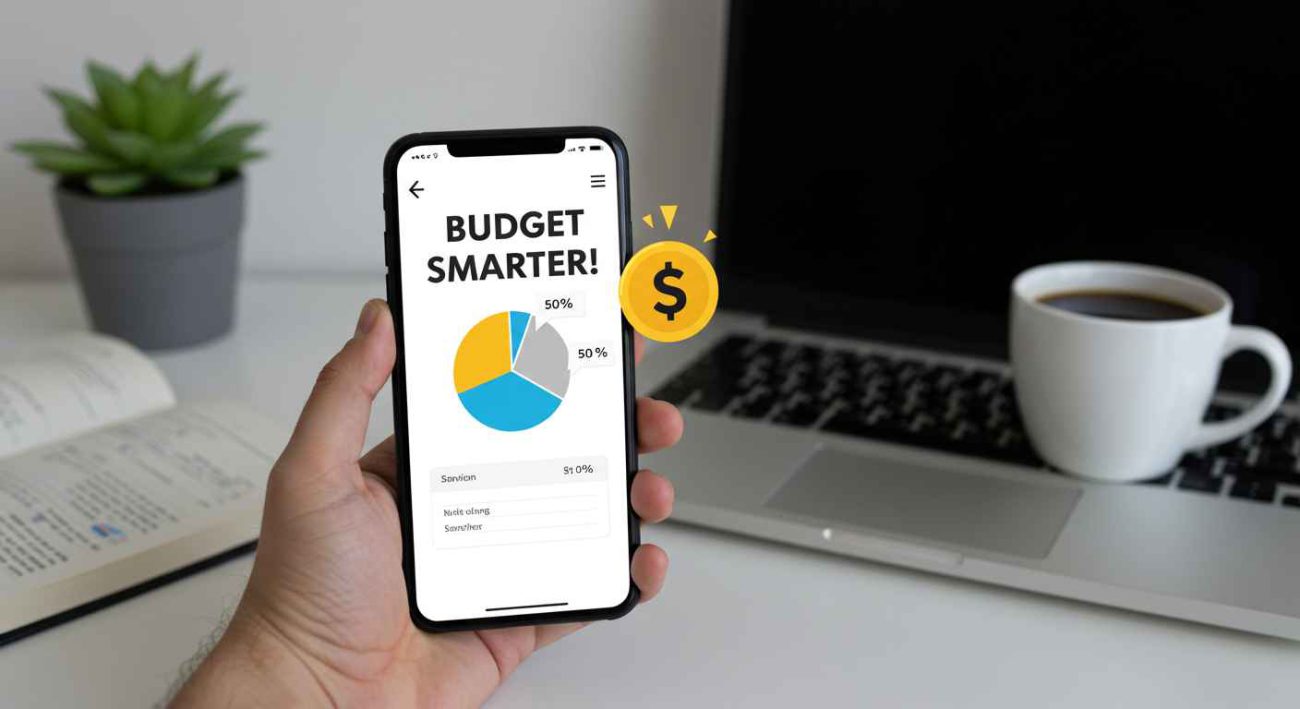We’ve all been there, wondering where our money slipped away to—another takeout order, an impulse buy, or maybe just life’s endless stream of “unexpected” expenses. Budgeting might sound like a chore, but it’s really a roadmap to financial freedom, especially for us tech-savvy folks who love tools and systems to make life smoother. This article dives into 10 practical, tech-friendly budgeting tips to help you take charge of your finances. Ready to turn that bank account frown upside down? Let’s explore how these strategies can empower you to make smarter money moves.
1. Set Clear Financial Goals
What’s your money working toward? A new gadget, a dream vacation, or maybe a debt-free life? Clear goals give your budget purpose. Start by writing down one short-term goal (like saving $500 for an emergency fund) and one long-term goal (like investing in a retirement account). Use apps like YNAB (You Need A Budget) or Mint to track progress. These tools let you visualize your goals, making them feel tangible and achievable. When your budget aligns with your dreams, every dollar feels like a step forward.
2. Track Your Spending Like a Pro
Ever wonder where your paycheck disappears? Tracking your spending is like turning on a flashlight in a dark room. Apps like PocketGuard or Goodbudget automatically categorize your expenses, showing you exactly how much goes to coffee runs or subscriptions. Spend a week logging every purchase—yes, even that $2 snack. You’ll spot patterns and leaks, like that sneaky streaming service you forgot to cancel. Knowing your spending habits is the first step to controlling them.
3. Use the 50/30/20 Rule
Budgeting doesn’t have to be complicated. The 50/30/20 rule is a simple framework: 50% of your income goes to necessities (rent, bills), 30% to wants (dining out, hobbies), and 20% to savings or debt repayment. Apps like EveryDollar can automate this split, ensuring you’re not overspending on takeout while neglecting your savings. This rule keeps your finances balanced without feeling like you’re on a money diet. What’s one “want” you could trim to boost your savings?
4. Leverage Budgeting Apps for Automation
Tech is your budgeting superpower. Tools like YNAB, Mint, or Personal Capital sync with your bank accounts, categorize transactions, and send alerts if you’re overspending. They’re like having a financial advisor in your pocket. Set up automatic transfers to savings accounts through apps like Chime or Ally Bank to make saving effortless. Automation reduces the mental load, so you can focus on enjoying life while your money works in the background.
5. Create a “Fun Money” Category
Budgeting isn’t about saying no to everything you love—it’s about saying yes to what matters. Carve out a “fun money” category for guilt-free spending, whether it’s for gaming gear, concerts, or that fancy coffee. Apps like Qapital let you set aside small amounts for fun without derailing your budget. Try allocating 5-10% of your income here. It’s like giving yourself permission to enjoy life while staying on track. What’s one treat you’d love to budget for?
6. Plan for Irregular Expenses
Life loves throwing curveballs—car repairs, holiday gifts, or that annual software subscription. These irregular expenses can wreck a budget if you’re not ready. Create a sinking fund using tools like Capital One’s 360 Savings, where you set aside a small amount each month for big expenses. For example, saving $50 monthly for holiday gifts means you’re ready when December rolls around. Think about one irregular expense you can start saving for today.
7. Review and Adjust Weekly
A budget isn’t a set-it-and-forget-it deal. Treat it like a living document that evolves with your life. Set aside 10 minutes each week to review your spending in apps like Mint or YNAB. Did you overspend on dining out? Adjust next week’s budget to compensate. This habit keeps you nimble and in control, like tweaking code to optimize performance. How often do you check in on your financial progress?
8. Cut Subscription Clutter
Subscriptions are the silent budget killers—those $10 monthly apps add up fast. Use services like Rocket Money or Trim to scan your accounts and identify subscriptions you’ve forgotten about. Cancel ones you rarely use, and negotiate lower rates for others (yes, you can call and ask!). One reader saved $200 a year by ditching unused fitness apps. Take a quick look at your subscriptions—what’s one you could let go of?
9. Embrace the Power of Cashback and Rewards
Why not let your spending work for you? Use cashback apps like Rakuten or Ibotta for online and in-store purchases, and pick a rewards credit card that aligns with your habits (like travel or groceries). Just be sure to pay off the balance monthly to avoid interest. Apps like Honey can also find coupons to stretch your dollars further. It’s like turning your everyday purchases into mini-investments. What’s one purchase you could earn cashback on this week?
10. Build an Emergency Fund
Life’s unpredictability is the only thing you can count on. An emergency fund is your financial safety net, covering unexpected costs like medical bills or job loss. Aim for 3-6 months of expenses, starting with $1,000. Use high-yield savings accounts like Marcus by Goldman Sachs to grow your fund faster. Automate small weekly transfers to make it painless. Knowing you’ve got a cushion brings peace of mind—how much could you save this month?
Take Control, Your Way
Budgeting isn’t one-size-fits-all, and that’s the beauty of it. Whether you’re a spreadsheet nerd or a set-it-and-forget-it type, these tips can flex to fit your style. The key is starting small—pick one or two strategies, like tracking your spending or setting a fun money budget, and build from there. With tools like YNAB, Mint, and cashback apps, you’ve got a tech-powered arsenal to make budgeting feel less like a chore and more like a game you’re winning. So, what’s your next step? Try one tip this week, and watch how it transforms your relationship with money. Your future self will thank you.

